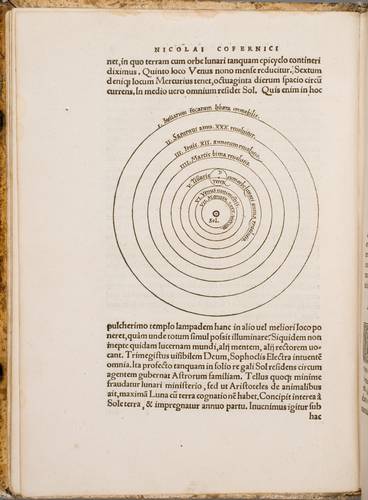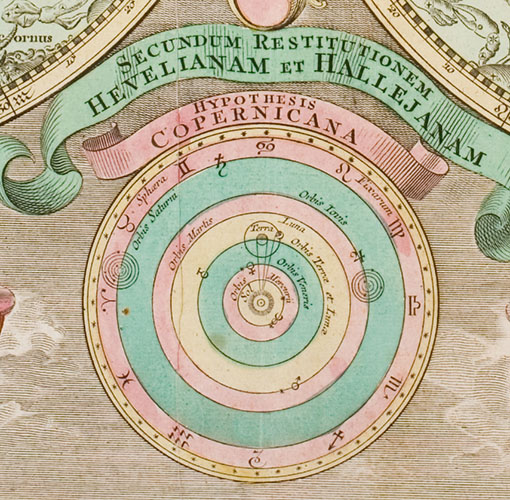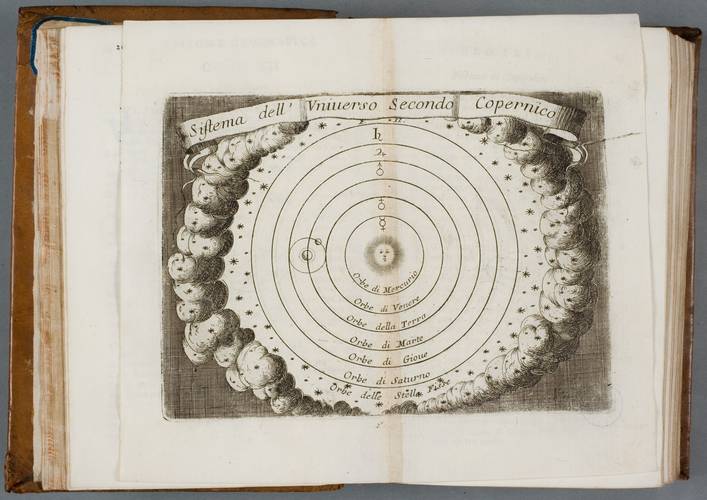M. Copernicus’s system
Nicolaus Copernicus’s heliocentric solar system model
Nicolaus Copernicus (Pol. Mikołaj Kopernik, 1476–1543) thought that the Sun is the centre of the universe and that all planets are orbiting in circles around the Sun in the same direction and at a fixed speed. The Earth which was considered to be an ordinary planet has only one satellite - the Moon rotating around it. The orbits of the planets are all more or less in the same plane. Mercury and Venus are seen close to the Sun, as their orbits are inside the Earth‘s orbit. Behind the Earth’s orbit moves Mars, farther on – Jupiter and still farther– Saturn. The Earth rotates from west to east around its axis and it gives an impression that celestial sphere rotates from east to west.



